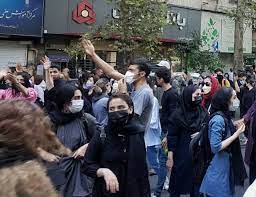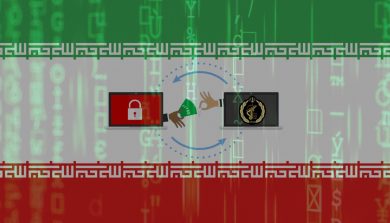In a nation gripped by censorship, surveillance, and authoritarian control, Iranian women are turning the internet into a frontline of resistance. From encrypted apps to global hashtags, they are using social media not only to fight against the Islamic Republic’s brutal regime, but to amplify their voices far beyond Iran’s borders.
This modern form of defiance, born out of state repression and nurtured by courage, is shaping a new era of digital resistance—and women are at its helm.
1. The Catalyst: Mahsa Amini and the Spark of a Movement
When Mahsa Amini, a 22-year-old Kurdish woman, died in the custody of Iran’s “morality police” in September 2022, the regime’s worst fears came true: the country ignited.
Her death, widely seen as a symbol of Iran’s gender-based oppression, was first reported on social media by Iranian journalists. Within hours, hashtags like #MahsaAmini and #WomenLifeFreedom spread like wildfire.
Women began removing their hijabs on camera, sharing footage of protests, and broadcasting state crackdowns to the world. Platforms like Instagram, Twitter (X), and Telegram became tools of revolution.
2. The Digital Arsenal: Tools of a New Resistance
Encrypted Messaging Apps
With state surveillance at an all-time high, Iranian women use encrypted apps like Signal, Telegram (with proxy servers), and WhatsApp with VPNs to:
• Coordinate protests
• Share real-time updates
• Protect activist identities
These apps have become essential for survival and organization.
Hashtag Movements and Global Solidarity
Hashtags have helped Iranian women reach the global stage:
• #WomenLifeFreedom became a rallying cry from Tehran to Times Square.
• #StopIRGC and #FreeIranianWomen demand international attention.
• #InternetFreedomForIran pushes for access to uncensored communication.
Citizen Journalism
In the absence of free media, women record arrests, police brutality, and protest crackdowns, uploading them for the world to see.
Despite the risks, they continue to film using mobile phones—knowing full well they could be tracked or arrested.
3. The IRGC’s Digital Counterattack
The Islamic Revolutionary Guard Corps (IRGC) has escalated its efforts to crush digital dissent:
Internet Blackouts
During uprisings, the regime regularly shuts down the internet in protest-heavy areas to:
• Prevent global exposure
• Disrupt coordination
• Control the narrative
Cyber Surveillance and Arrests
The IRGC’s cyber unit monitors:
• Posts critical of the government
• Hashtag participation
• VPN usage
Women activists like Niloofar Hamedi, who broke the Mahsa Amini story, were arrested, accused of “spreading propaganda.”
Fake News and Psychological Warfare
The regime uses bots and trolls to spread disinformation, discredit activists, and seed fear. False videos, edited clips, and fake protest footage are circulated to confuse or divide the public.
4. Brave Voices Behind the Screen
Masih Alinejad: The Voice in Exile
Living in exile in the U.S., journalist Masih Alinejad runs campaigns like:
• #MyStealthyFreedom – encouraging women to share hijab-less photos
• #WhiteWednesdays – protesting forced veiling laws
The IRGC has plotted to kidnap and assassinate her, proof of how threatening her voice is to the regime.
Sepideh Gholian: From Prison to Protest
After being released from prison, journalist and activist Sepideh Gholian immediately posted a video in front of Evin Prison, chanting against Khamenei. She was arrested again—but her post went viral, showing the power of digital defiance.
Anonymous Women Activists
Thousands of young women post videos of burning headscarves, defacing regime propaganda, and speaking out—many of them using pseudonyms or anonymous accounts to avoid identification.
Their content is viewed millions of times globally.
5. Global Response and International Role
Support for Internet Access
Tech companies and governments have:
• Provided VPNs and proxy tools
• Enabled access to Starlink satellite internet during blackouts
• Offered cybersecurity training to activists
Policy Advocacy and Pressure
Activists urge democratic governments to:
• Sanction IRGC cyber units
• Support encrypted communication tools
• Designate the IRGC as a terrorist organization
Media Amplification
International journalists, influencers, and human rights groups amplify Iranian women’s digital resistance, ensuring their voices are not lost in algorithmic silence.
6. The Cost of Digital Resistance
For many women, digital resistance has a steep cost:
• Arrest
• Torture
• Surveillance of families
• Prison sentences under vague charges like “inciting unrest”
Yet, they persist, knowing that every post, video, and story shared online weakens the regime’s control over the truth.
7. A Future Built in Bytes and Bravery
Iran’s future is being shaped in WhatsApp groups, Telegram channels, and Instagram reels—one post at a time.
Iranian women are using social media not just as a tool of protest, but of power. In a nation where freedom is punished, their ability to document, organize, and speak has become a form of warfare—and they are winning hearts around the world.
This is no longer just a national fight. It’s a global call to action.
Conclusion: The Digital Resistance Lives On
The IRGC may control the streets, the prisons, and the newsrooms—but it cannot control the internet forever. Every effort to censor Iranian women only fuels their determination.
“Our voices will not be muted. Our stories will not be erased. We are connected—and we are unstoppable.”
Join Our Newsletter!
Stay informed with the latest updates, news, and ways to take action in the fight for justice and global security. Sign up now to get updates delivered straight to your inbox!





